How to Practice Golf: Are You Setting Yourself Up for Failure by the Way You Practice Golf?29/8/2012
Many golfers are hypnotised on a weekly basis by an illusion that plays out on the TV nearly every week. They watch a telecast of a professional golf tournament somewhere in the world and observe a handful of professional golfers holing putts from all over the green, hitting 300 yard tee-shots into the fairway and deadly accurate iron shots close to the hole, making lots of birdies and very few bogies. It is an illusion. The guy or gal that wins the tournament might have finished twenty under par for four rounds of golf and it seems like they played near flawless golf to achieve their score because virtually every shot you see is a great shot. But its not true. Not even close to true... The Golf TV Puppet Masters  What you’re observing is a manipulation or distortion of the truth. The reality is that they hit plenty of less than desirable shots, but the TV people in their control centre at the tournament venue are directing what you see. So you are entertained in your lounge room with a smorgasbord of great golf shots almost all of the time. Because that’s what they believe you want to see, and that may be true, but this distortion can have serious effects on your golf development. 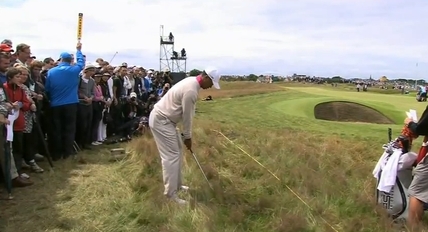 That’s why Tiger Woods is so entertaining and refreshing to watch because on his way to winning golf tournaments you will see him hitting shots from all sorts of ugly places around the golf course. Tiger's scrambling abilities are so well practiced and so good that he makes the recovery shots look very easy. But they're not! They require a lot of practice and this is the key to developing your bounce-back ability. Golf is a Game of Bad Shots Golf is a game of bad golf shots more than it is a game of good shots. That’s why sports psychologist Bob Rotella’s book was titled “Golf is Not a Game of Perfect.” Golf is one of those games that really only suits two types of people; golfers that thrive on challenge and who have a high tolerance threshold for hardship and adversity, and golfers who want to learn how to. If you don’t fit into either of those categories then my best advice is for you to look for another easier game to play because you will not enjoy playing golf. That is the reality of elite level amateur golf and pro tour golf; it’s a tough game that suits tough minded individuals, because the majority of golf shots you will hit will be at times a lot less than you expected and you will need to be able to handle it and not let it affect your progress. 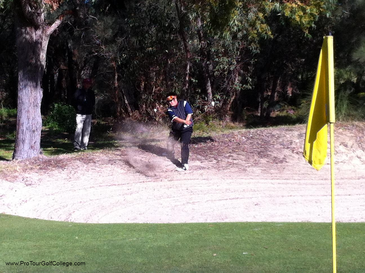 How you handle the constant and never ending challenges you face during a round of golf will determine to a great extent how successful you will be at playing the game of golf competitively. Since most of your golf shots will end up somewhere other than where you want them to you really need to prepare yourself better for it. Golf is one of the few games where you practice usually in a different place to where you perform, and this creates a lot of problems for golfers wanting to lower their golf score average. When you look at a typical driving range or practice fairway you realise pretty quickly that they look very different to golf holes. A golf range is relatively flat in design and wide and the tee area is also flat. The target areas will usually have flags or mounds for you to hit shots to. The driving range is nothing like the design of a golf hole which is designed to challenge you from the tee all the way to the green with narrow fairways, bunkers and sloping greens designed to make you think. Since many elite golfers spend many hours on driving ranges and practice greens honing their golf skills this is a significant contributing factor as to why many golfers fail to make consistent progress. For a start, you spend most of your time practicing shots into a wide catchment area - even though you might be hitting to a flag or something similar. You're unconsciously conditioning your mind to become comfortable hitting to wider target areas, but when you go to the golf course you're confronted with something entirely different. So the way you go about practicing your golf skills away from the golf course could be having a dramatic effect on the way you play. If you practice on perfectly manicured tee's all the time, how can you expect to pull off great recovery shots from tough lies around the golf course. _ Practicing the Tough Shots The truth is you won't pull these shots off if you don't practice them often. I have spent the better part of my adult life observing elite golfers practicing their golf skills in an effort to improve and without exception most (including professional golfers) never spend enough time practicing the tough shots. At Pro Tour Golf College our students practice all the tough shots that you're confronted with in a round so that they can develop their 'bounce back ability.' The bounce back ability is really quite easy to understand as it is the one factor that truly explains Tiger Woods and other leading professional golfers ability to bounce back and win when it looks like they won't. Bounce Back Ability = Practicing Tough Shots More Than Easy Shots  Your bouncing back ability is the confidence that you know that you're still in the game when your golf shots are not flying the way you want them to. Psychologically you have a distinct advantage over your competitors when you compete because you have prepared thoroughly by practicing the challenging shots which will give you the confidence to play them when you have to. It is easier to keep the momentum of your round going when you have developed the scrambling skills that give you far more choices when you get into tough situations off the fairway. In the photo (left) Jason one of the tour players we work with at Pro Tour Golf College is practicing hitting shots through a narrow gap in the trees because he knows that in any round of golf he is likely to get shots similar to this one and he wants to be able to pull the shot off every time. The Good, The Bad and The Ugly... 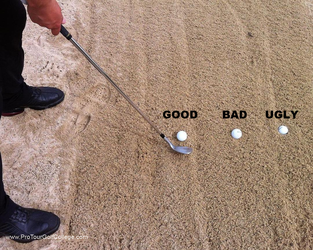 One of the other practice routines that our students work on to develop their skills and confidence is hitting bunker shots that we call "the good, the bad and the ugly." Both David and I have witnessed many elite golfers over the years preferring their ball onto good lies over and over as they practice their bunker shots, and we teach our students that this is a certain recipe for disaster. If you practice bunker shots from perfect lies all the time then how will you bounce back when challenged with a bad or ugly bunker shot? You won't! Good Putters Practice Flat Putts and Great Putters Practice Sidehill Putts  Unless you hole a chip, pitch or wedge shot you will be putting out on every green and many of your putts will be sloping putts. The bottom line in competitive golf is that you will have to hole tough sidehill putts to become competitive, and if you spend the majority of your time practicing putting on level parts of the green you're going to have major problems when you have to hole tricky left to right or right to left putts. The students at Pro Tour Golf College practice sidehill putts everyday using stringlines and putting hoops to ensure that they're as comfortable with these putts as the level ones. We explain to them that when their opportunity comes in a professional tournament to either make the cut, putt to get into a play-off, or putt to win, to expect a sidehill putt. If you want to be develop your bounce-back ability practice lots of sidehill putts when you go to the practice green. Top Professionals Practice the Tough Shots 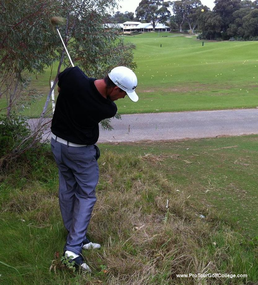 The year that Tiger Woods turned pro 1997 he came to Australia to play in the Australian Open and as I was at the tournament that week I spent some time observing him practicing his shortgame. At one particular point in his practice routine he threw some golf balls into a deep grass bunker and when he addressed each ball he pushed the balls lower into the grass so you could see about ten percent of it. He then proceeded to hit high soft landing shots to a pin close to the edge of the grass bunker and this gave me my first glimpse of his exceptional scrambling skills. Another time I watched Gary Player at a tournament in Paris hitting full shots from divots for half an hour and then at the same tournament I watched Vijay Singh practicing full shots from a downhill slope. This is another area of your game that you should devote time and effort to developing. As I mentioned earlier in this article practicing from level lies on the driving range is going to catch you out when you have to play your shots to a green from trouble lies. Hooks, Slices, High and Low Shots 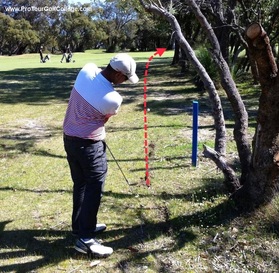 When you miss a fairway you are confronted with a number of options as to what you will do to extricate yourself from the situation. You might have to hit a golf shot with a hook or slice curve, or hit it higher or lower than usual. If you practice hitting straight shots on the driving range most of the time you again will find yourself in a difficult position to bounce back if you cannot competently shape your shots to get you back into play or better. Without exception top class tournament professional golfers are experts at controlling ball-flight and our students practice curving shots into small targets on the range so they are completely confident at playing these important shots when they arise. How about you? Can you hook and slice when you need to?... Golf is a Game Played on Slopes... Today the majority of young elite golfers spend more time on the golf range than they do on the golf course and as a consequence they don't learn to play the game of golf the way it was meant to be played. They are brainwashed into believing that you have to hit long and straight tee-shots and laser accurate irons to become a successful golfers. But this is far from the truth. Golf is not a game of perfect shots, it is a game of imperfect shots played from one side of the golf course to the other. Managing your emotional state requires you to be able to think clearly and make wise decisions at appropriate times in your round. To bounce back from the normal adversity experienced in every round will be easier for you to manage and achieve by devoting more of your available practice time to the trouble shots. Golf is a Game of Trouble Shots  It doesn't matter whether you are an average golfer or a professional golfer; golf by its very nature is a game played over uneven and irregular surfaces. This is one of the unique and endearing aspects of the game of golf and has always been the case. And long before there were golf ranges and practice fairways for golfers to practice and develop their golf skills upon, golfers learned to play the game on the golf course. Do yourself a big favor and play as much golf on the golf course as you can if your goal is to become a top class golfer. And the next time you go to the driving range to practice your golf skills devote at least 25 percent of your available practice time to the trouble shots that you will face in every round, and you will discover that when you're competing and facing some challenging situations, that you will have the confidence and courage to play the shots that can change the direction of your game transforming you into a bounce-back expert. Lawrie Montague and David Milne - Pro Tour Golf College The Professional Golf Tour Training College for Serious Amateur Golfers 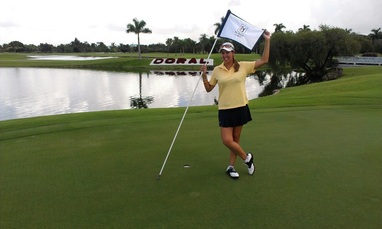 Golf Australia last Friday selected the team to play in the 2012 World Amateur Team Championship to be held in Turkey. The three Australian team members are Whitney Hillier, Breanna Elliott and Min Jee Lee. The Espirito Santo Trophy is played every two years and the defending country is South Korea who won the tournament in convincing fashion by 17 strokes from the USA and all three Koreans filled the top three spots in the individual section. The Australian team trailed by 34 strokes and finished in 15th spot. In the last team event that Korea and Australia competed in 2012 (Queen Sirikit) the Aussies finished 27 strokes behind so have an uphill task to close the gap on paper. On present form though the Aussies present form is good. All three qualified for the match play section in the US Women’s Amateur Championship this month and Whitney was the Medalist in the Trans-American Amateur and Breanna the Trans-American Amateur. Min Jee last month became the 1st Australian to win the prestigious US Junior Championship. So with all girls in good form leading up to the tournament an improved result from 2010 is on the cards.  PTGC student Whitney has had a good year in 2012 winning the two biggest stroke play events Lake Macquarie and Riversdale Cup, the Malaysian Women’s Amateur and with making the Australian Team has another goal crossed off the list that she and my co-director Lawrie Montague had put in place at the start of 2012. Which shows in no uncertain terms if you have clarity of where your destination (Goal) is you can take the most direct route. Well done Whitney and best wishes from all at PTGC at the 1st stage of the LPGA Tour School in Florida next week. David Milne and Lawrie Montague - Pro Tour Golf College  Golf is a tough game to learn and play well. To become a successful amateur or professional golfer you will need to develop your mental and physical skills in such a way that the outcome will be a consistent score average that is lower than 80 percent of the golfers you compete against most of the time. And one of the consistent challenges that you will face as you develop your skills and confidence is the managing of your emotions along the way to a lower golf score average. Your emotional state can significantly influence the quality of your golf shots and your golf score, and also influence your future performances depending on how you manage them. One of the daily challenges we face continually coaching elite golfers at Pro Tour Golf College everyday is managing the roller coaster of their emotional states. Practicing for many hours each week and for the most part failing to achieve your objectives is difficult for even the best to handle, but is especially true of aspiring professional golfers.  Training to play on a professional golf tour or to develop into a top level amateur is not for the faint hearted. It requires that you develop extraordinary mental discipline and resolve which requires the understanding, management and practice of a number of key skills that underpin every performance on the golf course and practice ground. The bottom line; becoming a tour golfer is a long term process of personal development to acquire a very high level of emotional competence. We teach our students to realize the power behind the management of their thoughts, feelings and behaviours in order to make continuous progress. Our experience training elite golfers over many years suggests that learning physical skills is easier for them than the learning mental skills. Most of the reason for this is the focus of golf culture on technique rather than on developing the whole golfer. At Pro Tour Golf College we believe that when you develop the whole golfer you can develop their full potential. To be so narrow minded as to think that perfecting golf swing technique will produce champion golfers is naive and ignorant of the many different elements involved in the high performance development chain. "At Pro Tour Golf College we believe that when you develop the whole golfer you can develop their full potential." We believe that the whole golfer is the sum of their parts and as you can see in the model above there's a lot of different parts involved in developing someone into a high performance golfer. That's why we have developed a number of different learning and training models to help to develop the potential of our students, and the Tougher Model was developed to help our students understand and develop the skills necessary to manage their mental/emotional state in tournaments and during training sessions. The TOUGHER Model is a series of statements that remind our students about the different elements that significantly influence elite level golf performance. We continually remind each student that their success on tour is ultimately their responsibility; that no one can do the work for them or teach them how to be passionate and motivated. These are intrinsic values that you develop for YOUR reasons NOT someone else’s. The TOUGHER model teaches our golfers that their ultimate success comes from within. Yes they can learn how to develop different aspects of their skills but the drive to master the skills and perform at the highest levels always comes from within. As I said at the beginning of this blog, "golf is a tough game to learn and play well." You need to develop many different aspects of your personality to continue to improve, and your drive to continue to master your skills is always self-driven. When you see PGA and LPGA golf stars performing on TV realise that they would score highly in every one of the following TOUGHER model statements. How about you? How do you rate yourself in each of the following statements on a scale of 1 to 7?
1. I thrive on the pressure of competing in golf tournaments..................................................... Score ____ 2. I have an optimistic attitude to the challenges of golf most of the time...................................Score ____ 3. I have an unshakeable belief in my ability to learn and improve my skills and score average....Score ____ 4. I'm goal focused and really good at sticking to the process to get there.................................Score ____ 5. I'm a hard and consistent worker all the time.......................................................................Score ____ 6. I'm emotionally flexible enough to recognise and then change my state when challenged....... Score ____ 7. I am resolute in my drive to achieve my goals with a single minded focus..............................Score ____ I hope you scored really high on the questions in this simple questionnaire. The idea behind it is to make you aware of these 7 important elements that will help you to drive your performances forwards and upwards. If you score low in any of these areas then you will need to spend some time to develop these attributes into strengths. Next week I'll show you exactly how you can go about it with a minimum of stress. Lawrie Montague and David Milne - Pro Tour Golf College  Ever since Tiger Woods appeared as a two year old on the Mike Douglas Show hitting golf shots on stage the face of junior golf development has changed significantly. From a young age Tiger dominated junior golf in the USA, and as a consequence parents have tried to emulate the Earl Woods’s formula for training a World Class golfer. Thousands of parents have followed Earl’s formula closely and unfortunately the majority have failed. There have been long term scientific studies done in three countries (East Germany, Russia and Sweden) that show why early specialisation (under 15 years of age) in any sport is a recipe for burnout and failure In an earlier article I highlighted Latanna Stone the ten year old who qualified to play in the US Women’s Amateur Championship this month, one of the critical factors for developing young golfers was the need to develop the athlete before developing the golfer. That means in the early stages of athletic development natural movements like running, jumping and throwing should be introduced to the youngster to learn agility, coordination, speed and flexibility. And this is supported in all three studies. In the Carlson (1988) study which analysed the training and development patterns of elite Swedish tennis players who were successful in International competition. The subjects were divided into two groups, one a Study group that consisted of elite adult tennis players and a Control group that was matched by age, gender and junior rankings. Both groups skill level was similar up to the ages 12 to 14 and it was after this phase that there was a difference in skill level where the study group were more successful at senior level. The findings are summarised below (Adapted from Carlson 1988) So the research and findings of all three studies are that early specialization before the age of 16 years of age in sport is not healthy physically and psychologically. In sports like baseball, shooting, archery the age to start training is 10 years to 12 years old. Specialization should take place between the ages of 15 to 18 years old and highest performance peaks between ages 22 to 30 years old. 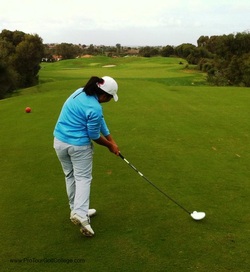 This is a helpful guide that from my experience coaching and running junior development programs over last thirty years you can start juniors in the game from the age of 5 years, but the emphasis should always be to develop the athlete first and the golfer second. If you go against what the research shows and have the junior specialize too early you will find someone who might look like a world champion at the age of 14 but probably not playing golf by the age of 18! Choose wisely and learn from the research done. David Milne and Lawrie Montague - Pro Tour Golf College  How do you know that the way you practice you golf skills is the correct way? Is there a correct way to practice golf? We know there is, and we’re almost 100 percent sure that the way most elite golfers we’ve observed are going about it is completely wrong! In this weeks article we’re going to look specifically at a key improvement principle rarely if ever talked about in the main stream golf media that you need to understand and apply to generate consistent improvement in your golf game. This incredibly important principle actually determines whether you will be successful at improving your golf skills and performances on the golf course when it matters or not. Do you take regular golf lessons in the hopes of improving your game? If you’re like many golfers striving to improve your performances on the golf course this is more than likely the approach you use.  If you take swing lessons on a regular basis how do you use the information to enhance improvement? This is an important question. If you use the information correctly you can experience improvement in your skills, however if you use the information incorrectly, no amount of extra practice will make one ounce of difference to your performances. Let me give you an example of what I mean. David one of our students at Pro Tour Golf College has been plagued with vicious and debilitating hook shots when he joined our program at Pro Tour Golf College. This shot greatly limited David's potential to improve his golf scores in tournaments. In his first lesson David Milne my co-director at Pro Tour golf College identified a flaw in David’s golf swing technique that needed to be addressed. He noticed that David's left wrist was bowing at the top of his swing and particularly into the downswing which resulted in the club-face being too closed (relative to a square club-face at the point where the ball separates from the club-face) as it struck the ball resulting in consistent hook shots. As a consequence of the closing club-face David responded by tilting his upper body away from the target to attempt to start the ball more to the right of the target so he could manage the hook. This resulted in a club-head path that was too shallow leading to fat and thin golf shots. Coach David effectively diagnosed the problem and gave David a highly specific practice drill to carry out to improve this flaw in your golf swing technique. (Watch the short video below) During the lesson coach you can see that coach David showed David how to make the change and watched him hit some shots working the adjustment into his swing and at the end of the session he told David that the change could take up to three months to change, where he could use it on the golf course with confidence. The learning process David was engaging in from this point forward might look like this; golf lesson + practice = result. Within this learning sequence there are three basic elements at play; 1) The golf lesson content 2) The practice sessions 3) The results that are generated. This is important to remember from this point forward; golf learning begins after the golf lesson. So how much you practice and the quality of your practice will ultimately determine the value of the information you have taken away from your lesson. In a perfect world David's lesson progress might resemble the illustration below where he improves after every lesson. What is more likely though is that you don’t improve after each lesson, if improvement in simple terms is defined as a measurable improvement in your performance? This is a problem for many golfers who assume that once they have the information they should be able to do it almost straight away! However learning golf skills doesn't work like that. What actually happens is that you need to understand what it is you're trying to do both physically and mentally first. In other words; 1. You need to understand it conceptually (How does it look compared to my old way of doing it?) 2. You need to understand it physically (How is it supposed to feel to me compared to my old way of doing it?) 3. You need to practice it enough to bring about adaptation...(Bring about what?) Your golf practice routines should be designed so that the objective of the exercise is to put your mind and body under progressively increasing levels of stress to bring about change. You simply won't change if you keep doing the same drill the same way for a long time. The greater the degree of adaptation in the golf training process the greater the potential for higher levels of performance when it matters. For that reason the purpose of any well designed golf practice plan is to bring on adaptations that do one thing; improve your golf performances on the golf course. That can mean things like; improve your ball-striking competence, to making a golf technique function differently. Therefore golf improvement is only possible if you observe this important practice sequence... Increasing stimulus (i.e. Specific practice drills) = Adaptation (Growth of new pattern of movement) = Improved performance (Measurable difference in a performance - initially on the golf range and ultimately on the golf course in tournaments). In this case the stimulus is the specific drill/s that coach David administered that brings about or accelerates a physiological growth response in David's golf swing technique. In David's case the drills change his existing motor pattern for a better and more functional one. Keep in mind that progress is slow and you will more than likely perform poorly for a while until the changes start to take hold. In David's case we tracked his rate of improvement and you can see what it looks like in the illustration below. 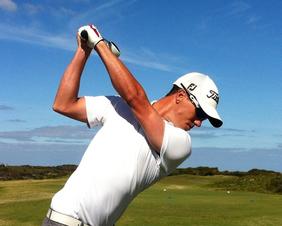 The Principle of Adaptation teaches us that by repeating a practice drill technique, carefully many times our body begins to adapt to the new changes and the skill becomes easier to perform. The principle also explains why learning a new skill is challenging both mentally and physically, but after practicing the same practice drill for consecutive weeks you feel that you’re adapting more easily to the new technique. The requirement here is that you need to vary the practice drill routine and apply it until your new skill becomes automatic. The rate at which adaptation occurs for you will depend on a number of critical factors; a) The complexity of the skill and drill being practiced b) The volume of golf shots you hit per week c) The intensity of your concentration on performing the practice drill carefully and correctly d) The frequency of your practice sessions One way to manage your practice activity in a way that encourages adaptation is to use a golf practice score card like the one we use below. This card helps you to plan, manage and monitor your practice sessions so that you give yourself the best chance of adapting to your new golf technique. The card below is David's practice score card designed for the drill he's working on for a week. You can see that David was frustrated after his first week of attempting to improve his flaw in his technique. Believe me, changing your golf swing technique can be very frustrating - especially if you don't have a good change process behind you. This process has to be planned carefully by your golf instructor so you can understand the process you will be going through. If you don't go about it correctly there's a very good chance that you will never learn to adapt the new skill to your existing technique. At Pro Tour Golf College we understand the training and learning process very well so our students can move through the process with a high level of confidence because we explain the process I've shared with you carefully.
In our experience this is not how golfers go through the change process and as a result many golfers end up failing to make the critical changes that would lead them to much better performances on the golf course in tournaments. Do not take the change process lightly. Learn to understand exactly what you must do and follow the learning path patiently and carefully and hopefully you will come out the other side with much better skills and performances on the golf course than you ever thought you would. Lawrie Montague and David Milne - Pro Tour Golf College [email protected] Presently there are thirty eight Korean women golfers ranked in the top 100 on the LPGA tour, and four of them are in the top ten World Golf Rankings. Competing on the LPGA tour the number is approaching fifty, and thirty of them have won 100 tournaments and ten Majors. Not a bad record since 1998 and a country that has 0.7% of the world's population. The men are also stamping their authority on the USPGA Tour with five in the top 100 World Rankings (K.J. Choi, Y.E.Yang, Noh Seung Yul, Sang Moon Bae, Sunghoon Kang). The pathfinder has been K.J. Choi and the flood gates were opened when Y. E. Yang became the 1st Asian to win a Major (2009 USPGA) beating Tiger Woods on the final day at Hazeltine.  The most common perception or indeed belief is that it has happened out of the blue - a recent phenomenon over the last few years. But nothing could be further from the truth. It’s the culmination of a twenty year development plan that has come to fruition, and it happened because all stakeholders came together on the same page driving the Korean National Golf Program toward their “Goal.” In a country were higher education is placed above everything else for a young boy or girl. It is such a high priority that on one day in November (November 10th last year) the whole of South Korea comes to a halt and goes silent, aircraft are grounded, offices open later and commuters stay off the road so that final year high school students can take their final exams (multiple choice questions) that will literally determine their future. Score well and entry into the top universities of your choice wait for you, score badly and entry into university is not an option. The Beginning of Golf in South Korea  It all started when South Korea were awarded and hosted the Summer Olympic Games in 1988. Sport was almost elevated to the same level as education in the minds of most Koreans. School children attend school from 7 a.m. to 3 p.m. and to stay ahead of the pack their parents spend a substantial amount of their take home wages on private tuition (up to 3 hours extra each day) to ensure their child succeeds. It’s full on pressure and it becomes a way of life.  So the number one ingredient is the South Korean culture which emphasises constant repetition in pursuit of perfection and which Calligraphers and Taekwondo masters train their students. The conflict with educators in the Western World now is the argument between rote learning vs critical thinking. The Korean model leans toward rote learning which is learning things by repeating them without thinking of them or trying to understand them. Combined this with “deliberate practice” routines (K Anders Ericsson book “The Road to Excellence”) and a work ethic that most young westerner's (except Olympians and high achievers) would cringe at, and you have a recipe for success. Alright, we have the culture and the work ethic but this is where the stakeholders come in to make the South Korean golf program world class. Lawrie and I define world class in golf as Top 100 in the World Rankings. The stakeholders being Corporate Sponsors (LG, Samsung, Hyundai etc.), South Korean Golf Association, golf facilities (courses and driving ranges), golf coaches and most importantly Dad’s and Mum’s. The Great Migration of South Korean Golfers?  Here are some figures on the facilities and coaching available in South Korea. There are 500 golf courses, 4,000 driving ranges and 9,000 certified instructors. Now these numbers especially the certified instructors are critical to attract and develop world class golfers. What no one talks about is that for at least two months of the year winter sets in and playing golf is out of the question. So for the months of December to the end of February thousands of young Koreans with their instructors relocate to training venues all around South East Asia, Australia, New Zealand and the USA. In groups of up to 30 students they find a facility that allows them to hit unlimited golf balls and play 36 holes each day. Australia was a popular venue through the 90's and not just for the facility and climate but for the expertise in coaching, sports science and medicine that was available. These resources once exploited, these groups move on to more cost effective locations mainly in S.E. Asia.  What also happens is that whole family’s relocate to USA, Australia and New Zealand to further the careers of female golfers. The current US Junior and US Women Amateur Champions are Lee Minjie and Lydia Ko. Both of Korean heritage and live in Perth Western Australia and New Zealand respectively. The coming out for the South Koreans was when the women’s national team finished 2nd in the Espirito World Team Championship held in France in 1994. The youngest team member and 16 year old at the time shot a 64 in the last round and her name Se-Ri-Pak. (My business partner at Pro Tour Golf College Lawrie Montague was in Paris at that tournament as the Australian Women's Team Coach and witnessed her historic round) Four years later she made history by winning the 1998 US Women’s Open at Blackwolf Run and herald the coming Korean Juggernaut. At the last count she has won 5 Majors and 25 LPGA tournaments. It is widely known that her father was a hard task master who made his daughter each morning at 5.30 am run up and down 15 flights of stairs in their apartment block to build Se-Ri’s strength and cardio endurance. There were reports that in the early days he made her practice in the cold until icicles formed in her hair, and to toughen her up he made her sleep in a cemetery to overcome her nerves!! This is not the exception, but the rule for most parents who demand 100% commitment from their children. 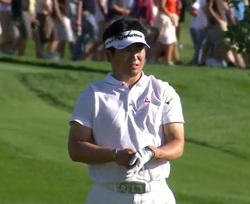 The domination of South Korean women in Amateur team events in recent times was on show when they won the last Espirito World Amateur Team Championship in 2010 by 17 strokes from the USA, and the last Asia Pacific Team Championship (Queen Sirikit) by 15 shots. The men are now moving toward doing what the women did in the USA in the 1990’s as they are targeting the PGA Tour rather than the Japanese and Asian Tour as in years gone past. Five years ago 22 players signed up for the USPGA Tour school, last year 52 players signed up for Tour School. So it’s not good luck or “talent” as we get told but a twenty year plan that was conceived in the early 1990’s and followed exactly with no short cuts, and countless hours of practice and training by thousands of golfers to come to this point where South Koreans are the dominant force in Women’s golf and they're on-track for men's golf as well. SO THEY’RE NOT DONE YET!! The pipeline is filled up and ready to deliver the next generation of Champions. David Milne & Lawrie Montague - Pro Tour Golf College The Professional Golf Tour Training College for Serious Amateur Golfers  A number of leading PGA Tour players are taking both sides of the argument to ban the long putter. Webb Simpson who has been using a belly putter has fired up the debate by saying that no one in the top 20 of the Strokes Gained-Putting statistic uses a long putter. He might be right with that comment, but what stands out to me is that there are numerous players like Adam Scott and Ernie Els who were languishing in 176 and 181 position in Stroke Gained-Putting but after changing to the long putter (Broomstick and Belly) are now in the top 80 in that statistic. This big jump in rankings has allowed these players to be competitive and win tournaments again. Let’s examine some real facts and how it could affect the game of golf in the future. In last month's Open Championship played at Royal Lytham & St Anne’s 27% of the field used a long putter (26 long and 17 belly) with winner and runner-up having one in the bag. Another fact that have made the R&A and USGA take notice is that three out of the last four Majors (Keegan Bradley 2011 USPGA, Webb Simpson 2012 US Open and Ernie Els Open Championship 2012) have been won by players using a long putter (Keegan Bradley 2011 USPGA, Webb Simpson 2012 US Open and Ernie Els Open Championship 2012). Ernie Els in the last decade was on the side of banning the long putter on the PGA Tour but as his stroke gained-putting ranking slipped out to number 180 he started to use the belly putter and has been quoted recently as saying “As long as it’s legal, I’ll keep cheating like the rest of them!”  Tiger Woods weighed into the debate by suggesting that the putter length should not be longer than the shortest iron in your bag. As outlined in one of our blogs the length is not the issue but the anchoring of the putter to a third point of the body is what will be ruled upon. Angel Cabrera and Matt Kuchar use a long putter but only hold it in their hands. The long putter has been around since the 1930’s when Paul Runyan (two times USPGA Champion 1934, 39) used it and there are pictures of him on display at the Riviera Golf Club in Los Angeles. The long putter up to recently has been the last resort of older players (Bernhard Langer, Fred Couples) who were trying to extend their careers for as long as possible. But now with young players like Keegan Bradley using a belly putter and winning Majors there is a generation of juniors now starting to use long putters from the beginning even before they even try the short putter. I have junior’s aged 9 years to 12 years old whose parents have already put a belly putter in their bag. It won’t be long before club manufactures will have the belly putter as an option in junior starter sets! The R&A and USGA will meet in October to discuss what stand they will take on this issue and whatever decision they make it will only come into effect in 2016. 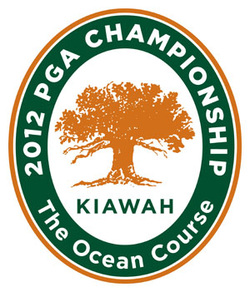 The 94th USPGA Championship being played at Kiawah Island Ocean Course in South Carolina. At 7776 yards in length it is the longest course in Major history eclipsing Hazeltine golf course that hosted the PGA in 2009 by 72 inches. Kiawah Island is another Pete Dye design and like his other creations Whistling Straights and TPC Sawgrass it will test the players technically and also mentally as every drive, approach and putt is waiting for a lapse in concentration that will translate into a big number on the score card. This is an important week for the US players as the automatic selection spots numbering eight will be decided for the 2012 Ryder Cup on Sunday at the completion of play. Captain Davis Love III has a very strong and in form team shaping up. Hunter Mahan a two time winner on the US PGA Tour this year is currently not in the top eight and needs to finish well this week to snatch back the spot Keegan Bradley took by winning last week at the WGC Bridgestone Championship. In four years time (2016) golf will be back in the Olympics and who do you think will be playing for Australia? Good golfing, David Milne and Lawrie Montague - Pro Tour Golf College  Ok so you’ve had enough of playing amateur tournaments for tin cups, micro wave ovens and TV’s and you want to step into the professional arena and play for pay. But are you really ready for it? Good on you for being ambitious enough to consider playing professionally, but be prepared for vast difference in the standard of play from the amateur ranks to professional ranks because they’re light years apart and it is no where near as glamorous as you might be thinking. Professional golf is one of the toughest careers you could ever consider pursuing. The mind-set for professional golf is relatively easy to understand - achieve a low golf score average in tournaments, but the application of this is extremely difficult to achieve. “I lived on the road for 15 years. It isn’t what friends and family that don’t travel for work think it is. Seldom if ever did I get to stop and smell the roses. I was being paid to produce, not vacation. Nights are the worst part. If you don’t really love what you are doing, the road will burn you up. And even then, you develop a love/hate relationship with the adventure. You love the excitement of the road, but dream of being home. When you do get home you can’t wait to get back out.” – 'Zimbello' (Psuedonym) commenting on the article in Forbes by Michael Noer “On the Edge: Money, Life and Loneliness on the Fringe of the PGA Tour” Here’s the link to read this excellent article. http://www.forbes.com/sites/michaelnoer/2012/02/08/ben-martin-pga-tour/ Professional golf whether at mini tour level or major tour level is extremely competitive and any amateur golfer-male or female that wishes to take this path needs to appreciate that from the time you turn professional it will take you at a minimum 7 to 10 or more years of hard work, dedication and patience to make it all the way to the major league. But wait I hear you say, what about Rory McIlroy or Lexi Thompson, they didn’t take 7 to 10 years to become world class professional golfers. Yes there are always exceptions to this rule – but very few! For the majority of elite level amateur golfers who turn professional the 7 to 10 year rule holds true. And there are absolutely no guarantees! The majority of the ambitious golfers who begin the journey from minor tours to major tours won’t make it all the way, as the attrition rate of professional golfers is very high because it’s one of the toughest ways in the world to earn your income. How many careers can you think of that you have to pay the price both in terms of effort and dollars before you get paid for your whole career? Amateur to Professional - How Good Do You Have to Be?  So how good do you have to be to consider turning professional? As an amateur golfer we tell our students at Pro Tour Golf College that at a minimum five out of ten of your competitive rounds (50 percent) in state and national ranked amateur competitions should be below par, and your highest score should not exceed three over par on championship level golf courses. We explain that if you don’t achieve this minimum standard you simply won’t make cuts in tournaments - plain and simple. This is particularly true on the men’s tours where the scoring tends average to be a little lower than the women’s tours. The cuts in professional golf tournaments will range from a high of 2 over par to a low of 5 under par, so this knowledge alone should guide your decision. How Much Does it Cost? At a bare minimum it will cost you over one thousand dollars each week to fly to a tournament site, accommodate and feed yourself and also travel to and from your tournament venue each day. The Web.Com Tour (Formally Nationwide Tour) costs at a minimum $75,000 per year and the PGA Tour about $110,000 per year before you make a cent! This is unless your tour is city based like a number of the larger mini tours in the US such as the The Gateway Tour and NGA Tour, in which case you can drive your car to the tournament venues each day and you won't have caddy costs to consider. Tournament entry fees to play on the larger mini tours in the US run out at more than 1000 dollars per tournament with an annual membership fee of anywhere from 750 to 1800 dollars depending on the tour. If you choose to be a non member of the tour you’ll pay around 1,300 per tournament. The example below is an income to expenses comparison of a professional golfer who finished 20th on the money list on The Gateway Tour in 2011 (Arizona Series) with earnings of $23,626.33. He made 13 of 17 cuts (76.5 %) and his scoring average for the 48 competitive rounds was 70.94, and he shot in the 60’s 31.2 percent of the time. Based on entry fees of around 1000 dollars per tournament, fuel costs, accommodation costs etc a conservative estimate of expenses for these 17 tournaments would be approximately 24,000 dollars. So this golfer would have more than likely broken even or possibly made a slight loss for the 17 competitive weeks. In the top ranking men’s and women's amateur golf tournaments with the strongest fields a good winning score for four rounds will be anywhere from 8 to 12 under par. But when you play on a minor professional tour that score could finish well down the list.  The male and female professional golfers competing on the mini tours around the world are great golfers and the scoring each week is red hot. Many of these professionals that make up the fields have been playing mini tours for years and are ‘tour hardened competitors,’ which is to say they have a lot of professional golf tournament experience. In-fact seasoned tour professionals are much more like golf warriors than golf competitors - they are focused, fearless and very serious about their business. Their performances on the golf course determine to a great extent whether they eat hamburger or steak, so they are extremely motivated to improve their competitive standing in every tournament they play in. 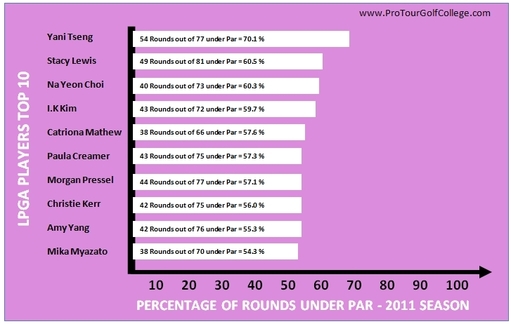 Have a look at the percentage of scores under par for the LPGA Players in this illustration left. (Click on photo to make it larger) You can see that Yani Tseng was under par 70 percent of the time. This is the standard that you should aim for if you want to make many more cuts than you miss, and many more dollars than you spend. They are under no illusion about what it takes to succeed on a professional golf tour; a very low winning golf score for 4 rounds of golf.
 As you can see (Left), the winning scores are a long way under par and this is what pro golf is all about. Developing your skills and influencing your performances to produce consistent under par scores on golf courses over 7000 yards in length for male golfers and 6,500 yards for female golfers is what it is all about, and this process for most golfers takes time, patience and money. Take a good look at the major tours and you’ll discover that many of the successful golfers worked their way up through the ranks from amateur tournaments to mini golf tours and then on to major golf tours. Sometimes professional golfers get the opportunity to make the step up to the big grade and it changes their life. John Daly is one example of this when whilst competing on the Hooters Tour he was informed that he got a start in the PGA Championship so he drove all night to Crooked Stick golf course in Indiana to play in the 1991 PGA Championship and then went on to win it! Many top level male and female golfers started their professional playing career on the mini tours. Take a look at this list of great male champions who all played on the NGA (Hooters) Tour before making the step up to the main tour. > Stewart Cink, the 2009 British Open Champion > Zach Johnson, the 2007 Masters Champion > Shaun Micheel, the 2003 British Open Champion > Ben Curtis, winner of the 2003 British Open > Jim Furyk, winner of the 2003 US Open > Lee Janzen, a two-time US Open winner > John Daly, a British Open and PGA Champion > Tom Lehman, winner of the British Open > David Toms, a past PGA Champion > Chad Campbell, the 2003 Tour Championship winner > Vaughn Taylor, a two-time Reno Tahoe Open winner > Craig Perks, winner of the TPC All these great golfers got their start on the pay for play tours and hundreds of others have as well over the years. 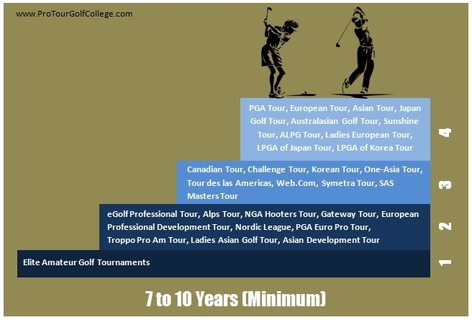 Professional golfers are specialists at low scoring and like most professions it takes a long time to learn the ropes. From amateur golf you start playing on the mini tours and development tours learning about yourself and your game. You will spend anywhere from one year to five years playing on this tier learning how to lower your competitive score average so you can make consistent cuts and checks. The next goal is to play good enough to qualify for 2nd tier events where the prize money increases substantially (so does the expenses) and the competition is tougher. ******************************************************************************************************************************************** At the time of writing, the Thailand Open on the One-Asia Tour was played at the Suwan Golf and Country Club, a 7,077 yard layout and to give you an idea of the level of competition the cut was 4 under par. The leader at the half way stage was Prom Meesawat at 15 under par, and the winner of the tournament was the Englishman Chris Wood with 23 under par. If you shot 10 under for this tournament you finished tied 48th. On the LPGA Tour the scoring was low for the Jamie Farr Toledo Classic. The winner was Ryu So-Yeon with 20 under par for four rounds with scores of 67 68 67 and a nine under par 62 in the final round. You needed to shoot par or better to play on the weekend in this tournament. ******************************************************************************************************************************************** You might play these 2nd tier events for three years or longer until you develop your skills and confidence to play well enough to qualify to play on a major golf tour like the PGA Tour or LPGA Tour. Right now you might be thinking that this seems like an aweful long time to make it onto a major tour but it is the reality of top level professional golf. The average age of a PGA Tour player is 35, so it is better to completely understand the learning process for professional golf before you take the plunge. And remember, if this is the downside of professional golf just think about the upside for a moment; you can play on tour and earn a great income for a very long time if you're really good. Hale Irwin is 67 years old and still making a very good income from professional golf. My advice is to take it one step at a time and with hard work, determination and a long term focus you might just get your shot at playing in the majors one day. Lawrie Montague and David Milne - Pro Tour Golf College Knowledge, Understanding, Wisdom: Knowing the difference is what makes the difference.  The difference is simply this: to know something is only that, knowledge. To understand something is to be able to act on that knowledge, being able to use it practically. Then comes the wisdom to know when to act on that understanding or not. With the complexity of the golf swing, one of my biggest drawbacks has been correctly translating the knowledge I had learned during the lesson and what worked on the driving range to the golf course. My issues were always the same; scoring in competition would go from one extreme to another, one round shooting 69, the next 78. The days my short game and putting was on, I shot low. When I struggled with the short game, the inconsistency of my long game would drive my score way up. Over the years, I had constantly adjusted my fundamentals (posture, alignment, grip and ball position) to correct my ball flight. Whilst this would work for the short term and I would play ok, they did not enable me to make any significant game improvements that I could understand and use consistently. I was wise enough though to realise that if I wanted to succeed at the highest level, I needed to make major changes to enable consistency in ball flight that would ultimately lead to game improvement and consistency. I believed that to improve, I had to find that perfect swing.  However, after years of searching and jumping from one set of instruction to the next, sometimes unavoidable due to my previous career. I slowly came to realize that there is no such thing as the perfect swing, except if we mean a swing that we can reproduce consistently and play the game to our best capability. Yet virtually all golf instruction is centred on developing that ever-elusive perfect swing and I have been as guilty as the next person to have followed that route. Perfect swings don't equal perfect performance. What then does you may ask?... The answer - your Low Competitive Score Average Beginning with the destination in mind - successfully competing on Tour My search for that elusive formula for success and the competitive edge over my playing partners now had a new purpose and a new direction. The objective was to find an institute that could meet the goals of:
 After much thought and hours spent reviewing a vast amount of instructional content on the internet, I finally settled on Pro Tour Golf College (PTGC). This decision was solely based on their instructional philosophy. Claiming that they would show you how to lower your competitive scoring average, develop your critical skills and knowledge pathway, including the competitive mind-set you need to cultivate to make the transition from amateur golfer to professional golfer. A very bold statement! Therefore, I had high expectations that their program could seriously improve my competitive performance and assist me in reaching my goal of playing competitive golf on Tour. After spending 4 weeks in their program, I was not left disappointed. Like all new students entering the program, the starting point during the first week included a detailed assessment of my current skill level. This assessment ran concurrent with the daily practice program and included full swing technique, short game skills, on-course assessment and in my case, equipment evaluation. I was extremely excited to get started on my quest but knowing where the state of my game was, the thought of being placed under the microscope so early on did leave me feeling very apprehensive. However, I had no time to fear the outcome or the results if I was to benefit from Lawrie and David's experience or their unique program.  The first week disappeared in a flash, raising many challenges along the way and did leave me feeling a little exposed. Nevertheless, what really fascinated me, was how "radically" different their training model was over everything else I had previously attended. Not so much the actual instruction, but the format. There was no standing in one place repeatedly hitting the same golf shot over and over again, as I had been exposed to in days gone by. No use of video tools, unless they were necessary which was a new phenomenon. No looking at the swing in slow motion or in key positions with lines drawn here, there and everywhere. There was no attempt to clone me or my swing to look like one of the in vogue players of today or yester-year. It was very clear from the start that I was not here to develop the golf swing in the usual manner. Instead, I was presented with differing challenges and a variety of shots and putts to not only keep practice interesting but the results would ultimately define my program of improvement.  The Transformation - Re-engineering the mind, swing and score Exposure to this interesting and unique training environment clearly highlighted my current lack of capability as I predicted it would. But, what surprised me most about using their training model was how mentally challenging the whole process had been. Practice had for the first time a real intensity and a purpose. Every shot had a meaning; it counted. If I was serious about wanting to improve, my development needed to be measurable. The results as mentioned before ultimately would shape the desired pathway to improve my technical proficiency and lower my competitive score average. When Lawrie discussed his findings, I was relieved to hear that the improvement plan would not include pulling my swing apart but would aim to work towards establishing a golf swing that could consistently:
 The main emphasis during my time at PTGC concentrated on altering my technical flaws to meet the above factors and Lawrie’s first step was to thoroughly discuss in detail the physics, geometry, cause and effects of what I was doing incorrectly. I welcomed this new approach with open arms and with his ability to break down the swing this way allowed me for the first time to understand the mechanics required to produce consistent and solid contact. At no time did I find his explanations complicated or feel overwhelmed with dozens of things to think about. In fact, they were rather obvious when explained. By the end of the review I clearly knew why the faults were occurring and truly understood why I was trying to do something a certain way. Once satisfied that I understood the changes we had to achieve the remainder of the time spent at PTGC included the process of re-engineering the swing whilst developing my capability platform (technical skill development). Outside of the normal programme, Lawrie set aside time to work closely with me on each stage of the swing, either discussing or designing techniques for me to use. We found that identifying and working on a limited number of swing alignments each week, then reinforcing them for 2 hours each day was perfect for my situation. Clearly it would take longer to remedy my swing map than the time we had available but by identifying the correct set of alignments, I would effectively be able to translate what I was learning. I knew what to practice and understand what to look for.  The upshot of my technical assessment and the changes we introduced are explained in detail on the PTGC blog http://www.protourgolfcollege.com/1/post/2012/05/golf-on-tour-how-a-scratch-handicap-golfer-improved-his-golf-swing-faster.html Alongside improving the technical aspects of my swing during my time at PTGC, the most valuable lesson Lawrie provided me with is a better understanding of the entire swing, specific to my swing type and build. I continue to use Lawrie’s prescribed swing alignments in daily practice and have started to develop a more repeatable swing that after several months now feels natural to the point where I can tell when I am getting out of sequence. I have made significant progress over the last couple of months and I am now able to diagnose the poor shots immediately on the course and make the proper swing corrections, or at least understand why. 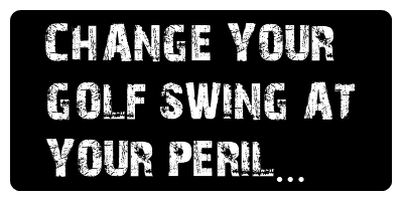 Conclusion After spending too many years in the pursuit of better ways to improve and the realisation, that perfect golf swings do not produce perfect golf scores was the catalyst that finally brought about my change of direction. The key to further developing my game could no longer entail practicing what I believed I already knew - but to learn new skills and techniques, embrace new ways of training then learn how to best to take these out on to the course. The path I had been following was obviously leading nowhere. There was no quick fix, no shortcut to success. My knowledge and understanding of what I was trying to improve was drastically wrong. I clearly had to change the training model I was following if I wanted to see results. I therefore feel very fortunate to have been involved with the program at Pro Tour Golf College. I am confident that Lawrie and David’s approach at evaluating, adjusting and systematically developing my swing, short game skills and mental approach to tournament play will prove the correct pathway to success. Not only are my performances steadily improving as I apply their theories and techniques, I now know that I have the support of 2 highly experienced and motivated professionals who take genuine delight in seeing their pupils improve and grow in confidence.  Their objective of building a highly personalized and balanced pathway of improvement, that allows the professional or elite player to increase their confidence and competitive toughness whilst driving down their competitive score average works. There is no shortcut to success: results = knowledge + understanding x effort! Every golfer dreams of success, and I'm certainly no different. I may have had a clear vision, but without a detailed, highly personalized plan, it could all just have ended as a pipe dream. Which is why becoming a student of the Pro Tour Golf College (PTGC) has provided me with the foundations and scoring skills to springboard my professional career. David Domanski - Trained with Pro Tour Golf College May/June 2012  Many golfers from all over the world travel to golf course venues from one side of the globe to the other to attempt to qualify to gain playing privileges on a major golf tour like the PGA Tour, Champions Tour, LPGA Tour, European Tour or the Asian Tour. Sadly most of these golfers will fail to qualify for one simple and overlooked reason; their golf score average is not low enough. Upon reflection they might blame their poor putting or a deficient golf swing technique, but the bottom line in professional golf is the low score average reigns supreme and they were not able to produce the numbers required to gain their card. 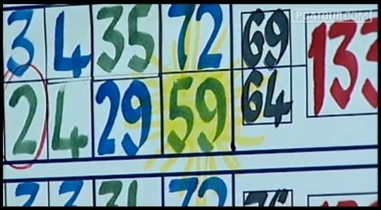 Harrison Frazer Shot 59 at US PGA Q School in 2009 It’s interesting to note that whether you play on a major golf tour or a minor golf tour the scoring standard is extremely competitive. From the Pro Am Tours of Australia (where Australia has developed the majority of their great golfers) to the Mini Tours of the USA, and onto the Asian Development Tour, the scoring standard on every professional golf tour is extremely competitive. You need to consider carefully spending your hard earned money to travel to a top tier qualifying school. And you need to know that you can produce the numbers required. So how good do you really have to be to qualify to play on a professional golf tour? In today’s article I’m going to look at the playing standard you need to achieve to be able to qualify to play on a major golf tour. USPGA TOUR QUALIFYING SCHOOL – Final Stage Results (November 30 - Dec 5, 2011) PGA West - Nicklaus Tournament Course Par 72 (7,204 Yards) TPC Stadium Course Par 72 (7300 Yards) In the graph above you can see that I’ve compiled the scoring averages required to gain the last card on 5 of the top tier professional golf tours. (No data available for the Japan Golf Tour Q School) On the US PGA Tour to gain the last card to play the 2012 season you needed a score average of 70.66 for 6 rounds of golf (- 8) against a par of 72 played on 2 golf courses that measure over 7,200 yards in length. (Click on the image below to make it larger)  Billy Mayfair at 44 years of age had to go back to Q School in 2010 after playing nearly 700 tournaments on the PGA Tour. He was medalist at 2010 Q School with rounds of 69 69 68 68 67 (-18) earning his card back to compete in his 23rd year on the PGA Tour. In 2011 he played in 29 tournaments, made the cut in 17 and earned $780,578 for 119th on the money list to keep his card for the 2012 season. So far in 2012 he's earned over 500,000 and is on track to keep his card for 2013. USPGA CHAMPIONS TOUR Q SCHOOL – Final Stage Results (November 13 – 16 2011) TPC Scottsdale – (Champions) Par 71 (7,115 Yards) On the Champions Tour the scoring was red hot and to gain a conditional card you needed a score average of 68.25 (- 11) and to gain a full card (5 full cards offered are highlighted) for 2012 you required a score average for 4 rounds of 67.5 (- 14) against a par of 71 on a golf course measuring 7115 yards. Jeff Freeman Freeman, a 50-year-old former club professional at the Country Club of Orlando and the 1999 PGA Professional Player of the Year took top medallist honors with 20 under for the 4 rounds and a combined score average over 4 rounds of 66.0. Watch this great interview with Patrick Horgan III who gained the fifth full card as he describes the pressure playing the 2011 Champions Tour Q School. USLPGA TOUR QUALIFYING SCHOOL – Final Stage Results (November 30 – Dec 4 2011) Legends Course Par 72 (6,594 Yards) and Champions Course Par 72 (6,664) Daytona Beach Florida  On the LPGA Tour to get the final card for the 2012 season you needed a score average over 5 rounds of 73.2 (+ 6) against a par of 72 on 2 golf courses measuring over 6,500 yards. 23 year old Junthima Gulyanamittafrom Thailand is a member of Purdue University's 2010 NCAA championship team. She took top medallist honors with 10 under par for the 5 rounds and a combined score average of 70.0. On the Ladies European Tour (LET) 30 cards were on offer at their final stage and the last card required a score average over 5 rounds of 73.6 against a par of 72. Jodie Ewart from England took top medallist honors with 11 under for the 5 rounds and a combined score average for the 5 rounds of 70.0. (Click on the image below to make it larger) EUROPEAN TOUR QUALIFYING SCHOOL – Final Stage Results (December 10 – 15 2011) PGA Catalunya Resort Par 72 (7,172 Yards) Girona Northern Spain  On the European Tour to gain the last card at their qualifying school to play the 2012 season you needed a score average of 70.16 (- 7) for 6 rounds of golf against a par of 72 played on 2 golf courses that measure over 7,100 yards in length. David Dixon from England took top medallist honors for the 6 rounds with scores of 74 65 63 69 67 69 for a 21 under par total and a combined score average of 67.83. ASIAN TOUR QUALIFYING SCHOOL – Final Stage Results (January 18 – 21 2012) Springfield Royal CC & Imperial Lakeview Par 72 (7,043 Yards) Hua Hin, Thailand  On the Asian Tour to gain the last card to play the 2012 season you needed a score average of 71.25 (- 3) for 4 rounds of golf against a par of 72 played on a golf course that measures over 7,000 yards in length. As you can see, the score average is low and extremely competitive. Over 600 golfers went to qualifying school in Asia to try to gain a card for the 2012 season. Just 42 golfers or about 7 percent were good enough to gain their card to play the Asian Tour in 2012. David Lipsky from the USA took top medallist honors for the final 4 rounds with scores of 72 65 69 68 for a 14 under par total and a combined score average of 68.5. So by now I think you'd agree that to qualify to play on a top tier professional golf tour requires a low golf scoring ability. In our experience at Pro Tour Golf College the majority of golfers we have known and observed who attempt to qualify to play on a top tier tour can shoot low enough scores, but not consistently enough to qualify for a tour. Here's the bottom line. The graph below is the combined average of all the qualifiers for the five examples I have used in this article. You can see that the scoring average is well below par for the mens tours and in-fact if you combine the score averages of the 4 tours and divide them by 4 the score average is 69.53. So there you have it; you need to be able to produce 4 or more rounds of golf at a golf score average of 70 or better to have a real chance of playing on a top tier professional golf tour. If you can't do that then save your money, play as many of the smaller professional events that you can play in, and keep working hard at your game everyday until you learn how to break 70 consistently.
Next week I'm going to show you the steps required to develop your game to give you your best chance of qualifying for a top tier professional golf tour. Lawrie Montague and David Milne - Pro Tour Golf College [email protected] |
Archives
June 2019
|
Proudly Supported By
Copyright © 2011 - 2018 Pro Tour Golf College
Website Managed By Golf Performance Media
All Rights Reserved
Website Managed By Golf Performance Media
All Rights Reserved



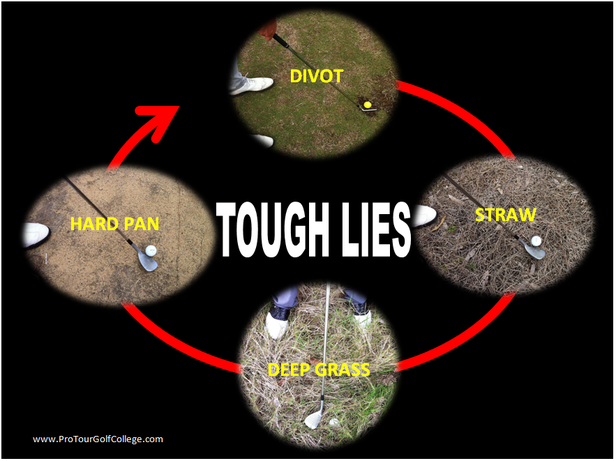







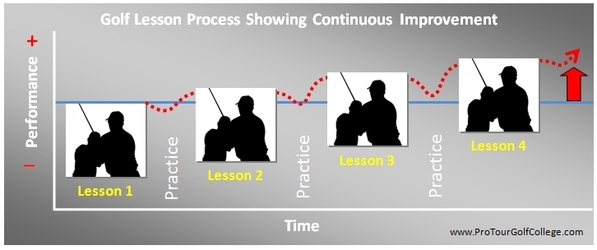
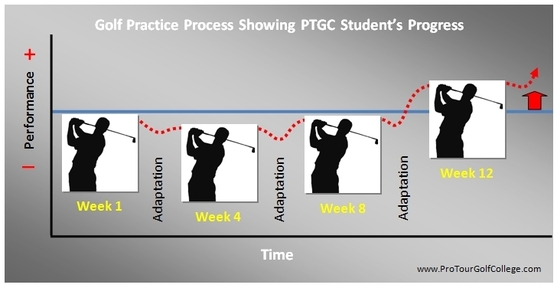



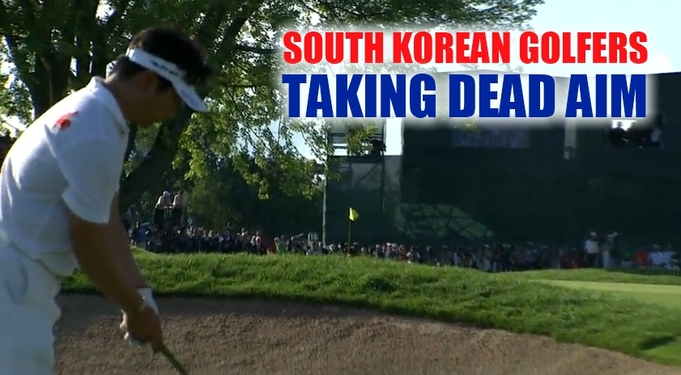



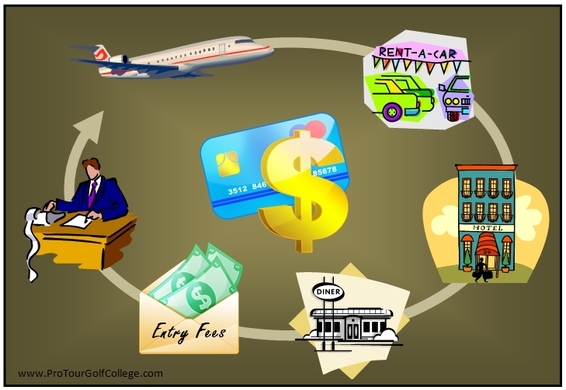


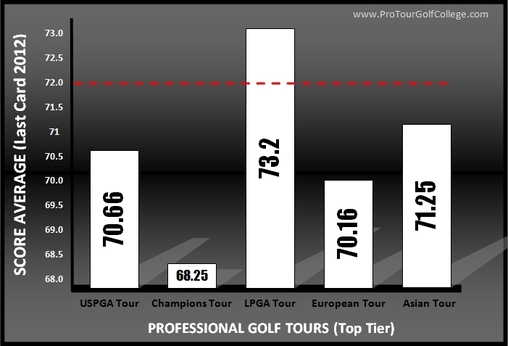





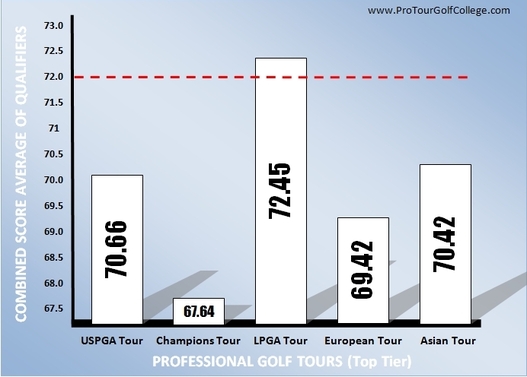
 RSS Feed
RSS Feed



